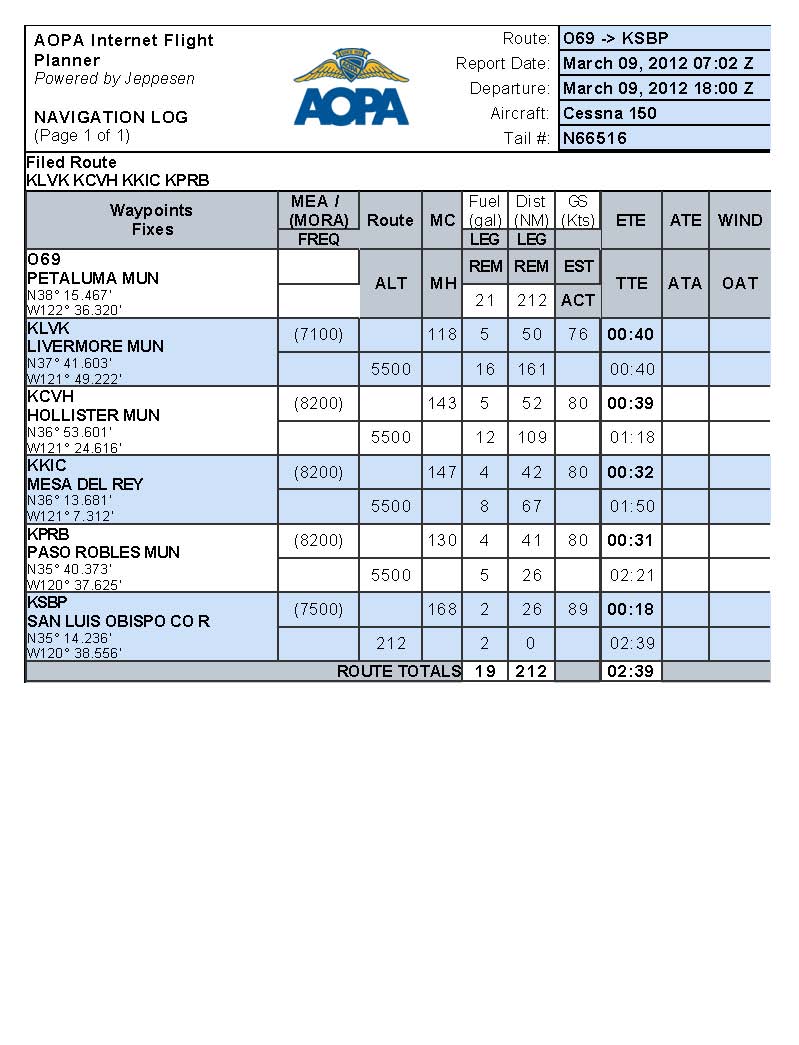Actually, I was just talking to a briefer since the MOA / Restricted is "as published" and I think my sectional expires as of today. Darned areas force me inland as they are constantly active from surface to 15,000 feet.
But thanks, I'm not looking at Monday, I'm coming back on Sunday, remember? Also, now the BF won't tell me if he's coming with me. He may stay the day and come back with his folks. Solo flying, whoopee. Will be an adventure for sure.
BF may have decided you're gonna drive him nuts with all the worrying. Heh heh.



Just kidding. Maybe.



If you fly out West, MOAs are a way of life. Get Flight Following and they'll let ya know if you're in the way of the fast movers. Folks have mentioned that too.

You're getting tunnel vision and not listening to folks who've "been there, done that". Stress does that. Relax. Enjoy yourself.
There's no need to go out of your way to go around MOA's. They don't "force" you to do anything at all.
Restricted is a different story. They're small. Go around those.

Recommended things in MOAs are the same as in any airspace as crowded as much of California is.
Eyeballs outside looking for traffic. Flight following. Talk to the controllers. They're nice folks. They want to help you get where you want to go.
I'd take a hot MOA with Flight Following (except maybe stuff around Nellis during Red Flag or another large exercise) over the LA Basin for VFR traffic watch, and travel, any day of the week.
Military pilots look outside and big stuff has extra eyeballs on board. They're pros who know they're flying fast stuff with closure rates multiples higher than your top speed. If their controllers tell them you're there (flight following... oh, and did I say flight following?) they'll stay away from you.
Or if they're really bored they'll form up on you about a 1/2 mile away.

(Looking out the side window once on a practice CAP search mission to see a C-130 matching speed and altitude 1/2 mile off the wingtip in Southern Colorado, was cool.)
The sky is dynamic. In order to be a student of the sky, you just have to get up in it and keep your options open. Know your "out" and use it if the brain says "this doesn't look right".
You've seen MVFR weather. You'll know it if you're flying into it. Trust yourself. Your eyeballs aren't going to lie to you. (You're not blasting off into embedded thunderstorms -- that's one case where the eyeballs can be deceived.)
It's really too bad there's not another pilot around to ride along. It'd lower your stress level and if they're good at mentoring, you'd get plenty of practice making in-flight weather decisions with a little help in the right seat to give confidence.
Given the right weather conditions on the big picture map, I'd launch with ya and enjoy the ride, while you got all the "fussing" out of your system.

I'd recognize it too. I used to do it. I got over it.
(And as Jesse showed me, real IFR weather is a much much harder a decision than VFR weather.)
I really learned a lot (both good and bad) from some early ride-alongs on VFR XCs with other pilots. A few trips down the road you'll feel a lot more confident about simple/short trips.
Then budget and time will eventually converge to allow a bigger trip and you'll get that "wow, I flew from one major weather pattern/system to another" and see how the briefing really can't account for all the changes possible in six or eight hours.
I'm hoping for good weather with a little bit of isolated clouds or precip somewhere along the way that's easily seen and avoided in flight for ya, just for the learning experience.
Right now, the pros think that front that's off the coast will become stationary and there's a big bubble of high pressure peeking into this map from the West. That's a good sign for you. That's about all you can tell right now. The north end of your route will probably be a little weather. The further south you go the better. Inland also looks like a solid "out" all the way.
If that map doesn't get any more squirrelly, and there's not some weird local coastal thing going on, that is a "go" map to me. But it's still too early to tell. And it's your call.
Look for things over the time between now and the flight that close off your "outs". If your outs are dwindling, reassess. If not, enjoy the flight.





 :wink2:
:wink2:

